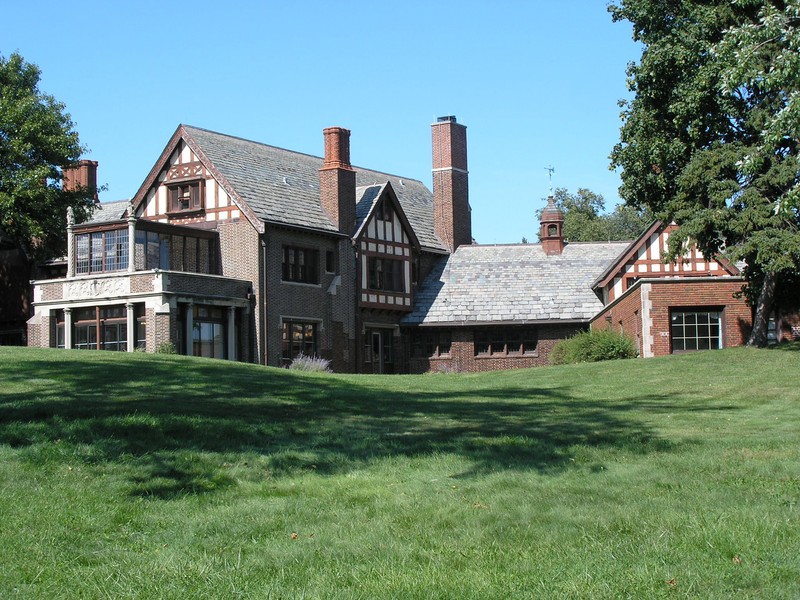Mayslake Peabody Estate
Introduction
Text-to-speech Audio
Images

Backstory and Context
Text-to-speech Audio
The Mayslake Estate serves as an example of the how those
who succeeded the most during the Gilded Age lived lavishly while
most wage earners, such as coal miners, simultaneously endured much
harsher conditions. 2 Indeed, 50,000 coal miners
died between 1870 and 1914. 3 Nonetheless, Peabody and
other Gilded-Age industrial leaders, including names like Rockefeller,
Armor, and Astor, rose to prominence during that era.
Peabody hired renowned
architect Benjamin Marshall to construct the Tudor revival-style mansion
on the existing site of Peabody’s 848 acre Mayslake Farm, which he purchased in
1911 and named after his first wife and daughter. Over the next
decade, the mansion was constructed, as were numerous outbuildings,
elaborate stables and an outdoor arena where prominent Chicagoans participated
in horse shows and drag hunts. The opulent Mayslake Hall and its
rural setting provide insight into the landscape of DuPage County during
that period, once dotted with magnificent country houses. Peabody, like many of the wealthy entrepreneurs and
middle-class businessmen of that era, left the city for
the suburbs.4
Peabody did not enjoy the estate long, dying on August 27, 1922. Although the property originally went on the market for $1.25 million, Jack Peabody, Francis' son and Catholic convert, arranged for the estate's sale to the Franciscans for a mere $450,000 in 1924. The Franciscans subsequently converted the Tudor Revival mansion into a retreat house and chapel adorned with stained glass. They expanded the estate during the 1950s by adding 112 rooms and a new, impressive chapel. Roughly 250,000 people attended retreats at the mansion from 1925 to 1991.5
